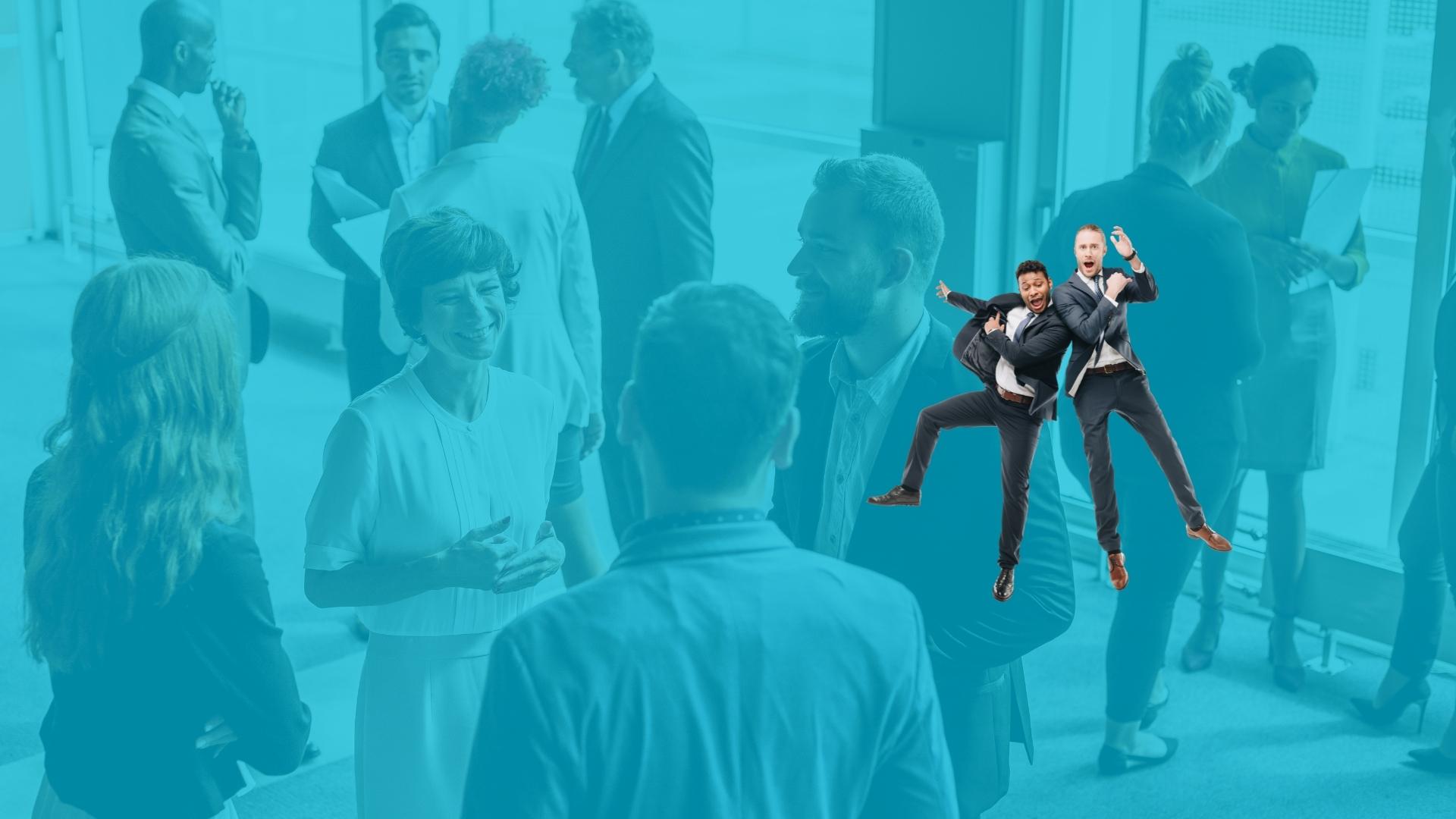During the pandemic, many event organizers relied on online polling and chat tools to engage audiences. The great news is the technologies developed to engage online audiences can be and are being adapted for in-person use.
Sheehan points out that Encore has several digital tools that can provide polling functionality for in-person events. “What you are looking for will determine which solution is best,” he says. “But at a high level, we can integrate polling into your event app, help you design content around digital audience response system tools or even engage your in-person and remote attendees with low-latency streaming.”
Hybrid Latency — the lag time between when something is happening on stage and when it reaches the remote viewing audience — is a huge challenge to engaging hybrid audiences. Current streaming platforms tend to have a latency lag of 40 to 50 seconds. That makes it hard to get remote viewer responses to polls, Q&A and chat responses that sync up to what’s happening in real time for the in-person audience.
“Encore is just about to release a new low latency streaming option, reducing latency delays to around three to five seconds, which will radically change the opportunities for interaction and gives remote attendees a near equitable experience,” Hughes says.
“When using the Chime Live℠ engagement platform’s new ‘Low Latency’ streaming service, we also [can] track an individual’s dwell time, and see who is participating, measuring down into two-minute time blocks. This means that you can see who has watched what, and if at any point there was a significant drop-off.”
Presenters often use polling to keep audiences engaged during presentations. But organizers can use polls to tailor the conference content.
“When you have too many experts or too much content for the time that you have available, you can poll the audience to identify the topics that are of most interest to them – before or during the event – and pick the content most relevant to them and focused on what they want to hear about,” Hughes says. Because adult learners only retain information they’re interested in learning, this technique enhances learning and retention as well as content engagement.
Polls also can be employed to take participants’ ‘pulse’ to measure sentiment throughout the event. “These check-in/check-out questions help the meeting planners understand where they need to focus their message, so that it connects as best as possible with the audience,” Wilcox says. “The last thing you want is to spend a lot of time and effort producing an event only for the message to fall flat.”
Audience engagement tools can also be used during presentations as knowledge checks to gauge the level of understanding on the subject they are presenting on. For example, presenters can ask the audience a question to test how much they know about a topic before diving into it, then test them after to see how much they retained. “This technique can help presenters customize how they deliver the content, which is another win for event participants,” Wilcox says.
Another technology that enhances audience engagement during the event is second-screen technology. “Second screen technology refers to the use of a mobile device to provide an enhanced viewing experience for a television broadcast or live presentation,” Sheehan says.
One technique event organizers can borrow from television producers is to embed the stream with special content that encourages the audience to interact with the stream as they’re viewing it live. An example of this is the ‘Story Sync’ content broadcast alongside “Breaking Bad” episodes during its fifth season. During the broadcast, an icon on the screen let viewers know that there was an Easter egg they could unlock on their mobile device. This special content included behind-the-scenes photos, trivia, interviews, and more.
“The coolest part [of] using second-screen technology, such as iPads, for events is the ability [of] your attendees to pinch and zoom presentation content to get a better look, skip backwards for a moment to catch something they may have missed, and ask questions right in the moment without stepping up to the mic,” Sheehan says.
One of the best examples Sheehan has seen of this was at a client event for doctors. “While facilitating the training, the presenter provided an image of an x-ray used for a diagnosis discussion. The doctors were able to pinch and zoom and get a great look at the x-ray,” he says. “Normally, they would have been limited to what was on a projection screen.”
